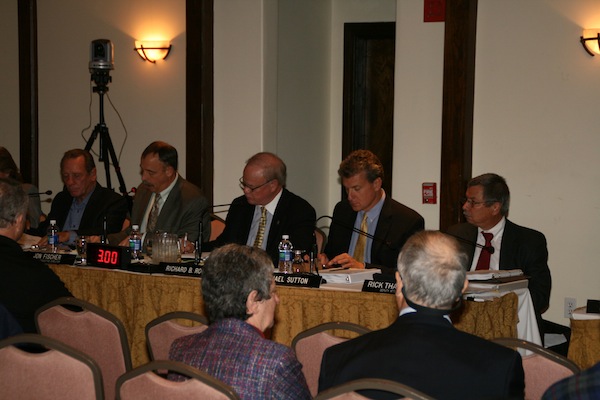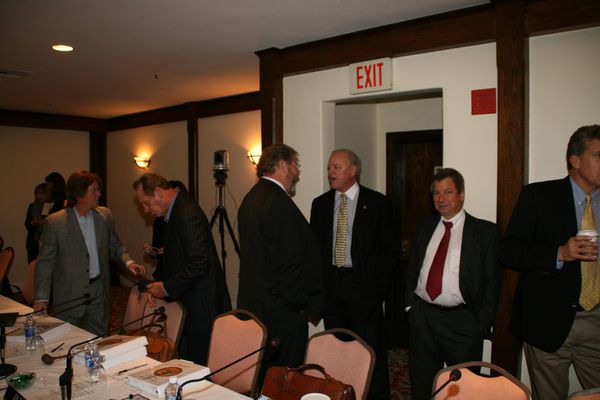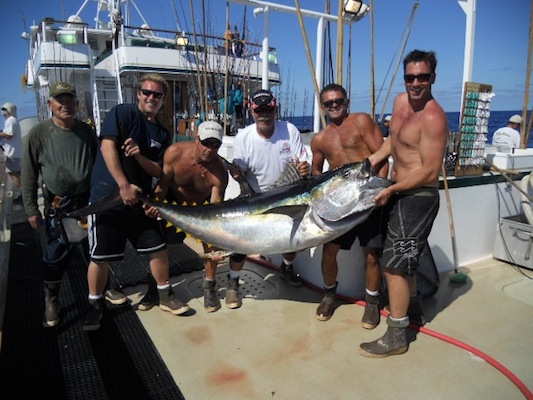Long Range Fish Report
From Sportfishing
From Sportfishing
Fish Report for 12-16-2010

Southern California waters closed to fishing by Fish and Game Commission
12-16-2010
Rich Holland
Commission enlarges reserves, passes closures
SANTA BARBARA - In the final meeting of the South Coast project of the Marine Life Protection Act Initiative process held in this enviro stronghold on Dec. 15, the Fish and Game Commission endorsed a dubious EIR, adopted options that increased the size of reserves off Swami's and La Jolla and then passed the enhanced IPA (Integrated Preferred Alternative) network of marine protected areas created by a Blue Ribbon Task Force during a much-maligned process that attorneys for fishermen all but promised would be the target of multiple lawsuits.
Ironically, the pedantic commissioner Richard Rogers sabotaged one of the largest reserve systems in the network when he sided with Jim Kellogg and Dan Richards in an attempt to throw fishermen a bone. In his prologue to the final vote, Rogers said that opponents of the MLPA process needed to "go back to school and do their homework" because there has been no peer-reviewed science that shows MPAs don't work. This was just after he voted to allow surf fishing in the Swami's MPA complex. If he had only read the work of Steven Murray, the Cal State Fullerton scientist heading the South Coast Science Advisory Team, he would have understood that Murray endorsed the no-take reserve model because of intertidal reserves that failed because of a lack of complete protection.
Unfortunately, Rogers also sided with commissioner Mike Sutton and Jack Baylis to increase the size of the reserves at Swami's, Scripps and La Jolla. The increase in size of both the southern and northern boundaries of the La Jolla closure had the most impact, hammering once again kayak anglers who also lost the "birthplace of modern kayak fishing" when the entire Big Kelp Reef area south of Point Dume was lost to a reserve. This was the safest, most productive area for kayakers other than La Jolla.
The biggest stir prior to the commission's actions came when lawyers representing the Partnership for a Sustainable Ocean gave testimony that records gained in a lawsuit proved that public meeting regulations had been disregarded and purposely avoided by all the quasi-public agencies created with the funds of the Resources Legacy Fund Foundation.
Commissioner Rogers mocked the testimony of the lawyers and those who paid for the legal effort. "I have to say 'nice try' to the legal guys, but we as a commission constantly face lawsuits and I'm only afraid of a judge's orders," said Rogers. "Bring it on," he added. He also said the there's a difference between passing the closures and implementing them, noting the act says the implementation relies on the availability of funding.
Richards, Sutton and Kellogg all had their say, with Baylis passing on his opportunity to comment. Sutton likened the MPAs to wildlife refuges. Richards said he's not against protecting fish, and Kellogg said they are the commissioners and they do what they think is right. Nobody tells them what to do, Kellogg noted. It must be pointed ou that Kellogg vehemently opposed the timing of the action during the depressed economy, saying that the process only moved forward because of political pressures applied "by an administration that wanted to get this done before they leave town."
Enviros were a bit dismayed when small "boutique reserves" at Refugio and Doheny were eliminated, but gave a rousing round of applause to the final result.
Rogers noted that MLPA legislation says the closures can't be implemented without funding, but neglected to respond to petitions from fishermen from the initial Central Coast project asking for those closures to be voided due to lack of enforcement and monitoring. And the bottom line is the South Coast closures are slated to go to regulation on the timeline demanded by the "charitable trusts" that have funded the MLPA Initiative.
SANTA BARBARA - In the final meeting of the South Coast project of the Marine Life Protection Act Initiative process held in this enviro stronghold on Dec. 15, the Fish and Game Commission endorsed a dubious EIR, adopted options that increased the size of reserves off Swami's and La Jolla and then passed the enhanced IPA (Integrated Preferred Alternative) network of marine protected areas created by a Blue Ribbon Task Force during a much-maligned process that attorneys for fishermen all but promised would be the target of multiple lawsuits.
Ironically, the pedantic commissioner Richard Rogers sabotaged one of the largest reserve systems in the network when he sided with Jim Kellogg and Dan Richards in an attempt to throw fishermen a bone. In his prologue to the final vote, Rogers said that opponents of the MLPA process needed to "go back to school and do their homework" because there has been no peer-reviewed science that shows MPAs don't work. This was just after he voted to allow surf fishing in the Swami's MPA complex. If he had only read the work of Steven Murray, the Cal State Fullerton scientist heading the South Coast Science Advisory Team, he would have understood that Murray endorsed the no-take reserve model because of intertidal reserves that failed because of a lack of complete protection.
Unfortunately, Rogers also sided with commissioner Mike Sutton and Jack Baylis to increase the size of the reserves at Swami's, Scripps and La Jolla. The increase in size of both the southern and northern boundaries of the La Jolla closure had the most impact, hammering once again kayak anglers who also lost the "birthplace of modern kayak fishing" when the entire Big Kelp Reef area south of Point Dume was lost to a reserve. This was the safest, most productive area for kayakers other than La Jolla.
The biggest stir prior to the commission's actions came when lawyers representing the Partnership for a Sustainable Ocean gave testimony that records gained in a lawsuit proved that public meeting regulations had been disregarded and purposely avoided by all the quasi-public agencies created with the funds of the Resources Legacy Fund Foundation.
Commissioner Rogers mocked the testimony of the lawyers and those who paid for the legal effort. "I have to say 'nice try' to the legal guys, but we as a commission constantly face lawsuits and I'm only afraid of a judge's orders," said Rogers. "Bring it on," he added. He also said the there's a difference between passing the closures and implementing them, noting the act says the implementation relies on the availability of funding.
Richards, Sutton and Kellogg all had their say, with Baylis passing on his opportunity to comment. Sutton likened the MPAs to wildlife refuges. Richards said he's not against protecting fish, and Kellogg said they are the commissioners and they do what they think is right. Nobody tells them what to do, Kellogg noted. It must be pointed ou that Kellogg vehemently opposed the timing of the action during the depressed economy, saying that the process only moved forward because of political pressures applied "by an administration that wanted to get this done before they leave town."
Enviros were a bit dismayed when small "boutique reserves" at Refugio and Doheny were eliminated, but gave a rousing round of applause to the final result.
Rogers noted that MLPA legislation says the closures can't be implemented without funding, but neglected to respond to petitions from fishermen from the initial Central Coast project asking for those closures to be voided due to lack of enforcement and monitoring. And the bottom line is the South Coast closures are slated to go to regulation on the timeline demanded by the "charitable trusts" that have funded the MLPA Initiative.
Rich Holland's Roundup
< Previous Report Next Report >

LongRangeSportfishing.net © 2025. All Rights Reserved.
Website Hosting and Design provided by TECK.net
Website Hosting and Design provided by TECK.net

